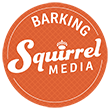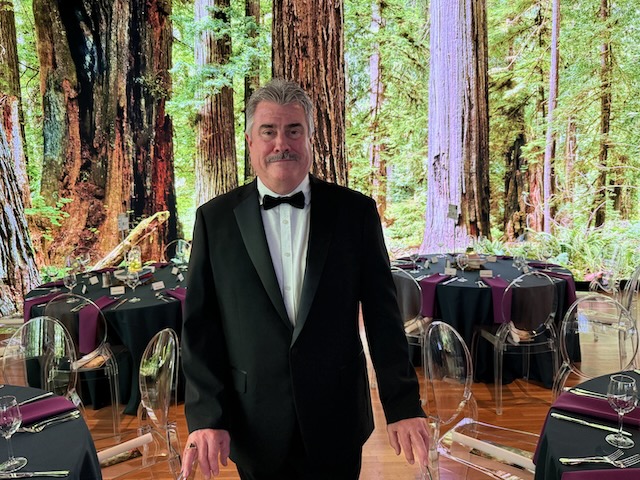In the previous article, we talked about Shane Meeker’s “Story Recipe.” This article will explore what Meeker calls Brand Mythology in his book entitled Story Mythos: A Movie Guide to Better Business Stories (the link is at the bottom of this article.) The terms myth and mythology are frequently misunderstood and often considered to be something not true and fictional. Contrary to popular belief, myth is something that is deeply true, at least to those who embraced the myth at the time. Mythology is a journey into the depths “of the human heart and mind—the part that wants and needs explanations to unanswered questions” (Meeker, 205). Myths answer the really big questions of a particular group at a particular time and are delivered to a people group by their leader or shaman, or in brands, the CEO. Every religion has a holy book filled with a series of stories that provided people with meaning, purpose and a connection with something much bigger than themselves. These myths are believed and trusted to be true by the people of that time and place. As Meeker states, myths satisfy the deepest needs of the human heart. For ten’s of thousands of years, myths framed the worldview of human beings.
The same is true for brands. Brand mythology is company lore—the creation stories, the founding stories, the employee stories, and the company vision stories. It is your purpose and manifesto and reason for being. The best brands always have a strong mythology at their core. (Meeker, 207)
Meeker identifies how four different kinds of myths play different roles in a brand (from Joseph Campbell). Consider answering these questions for your own company brand. You will be amazed at the results.
Mystical
How does your brand create wonder, amazement and intrigue? What is unique and how do you stand out?
Cosmological
What about your company addresses the big WHY questions? Why do you do what you do and how do you make a meaningful difference? What are your creation stories and how does it inspire both your company and your customers now and in the future?
Sociological
What are the rituals and symbols within your brand? Think of the unique processes and methods that are the driving force underneath the hood of your business. What are the symbols that represent who you are? What are the meanings behind these rituals and symbols that make them so powerful?
Pedagogical
How do you make your story easily understandable? Why should people care about your brand? How is your brand story personal, human, and relevant?
Meeker offers several valuable tips for how to build a brand mythology.
Conduct discovery interviews
One of the best ways to find the mythology that drives your band is through one-on-one interviews. Here, you will discover real stories from real people that will give your company authentic insight into how your workforce really thinks and feels about the company. If you are really ambitious, do the same with some of your faithful clients. Meeker recommends asking each employee to bring three pictures with them and discuss them in detail. One picture represents how the employee understands the company’s past, one the company’s present, and the final picture represents the future, where the company is headed. In the process, you will find some amazing story gems that might have been hidden from senior management. Meeker rightly cautions against surveys. They are impersonal and mechanical and the results you obtain will be the same. You want to hear genuine stories from real people. This is where you will find the heart and soul of your brand mythology.
Identify what is story-worthy
Once you have collected a sampling of company myths across all spectrums of the organization, you search for the stories that are inspirational, stories that people want to talk about with their friends and share on social media. Identify the stories that engage emotion, that change the way people think about you, and stories that will move them to act differently. Above all, search for stories that give insight into what truly sets your brand apart from the competition. What are the three things that make employees excited about going to work and that make customers love you?
“Either you are going to tell stories that spread, or you will become irrelevant. No one buys features, they buy the story”
(a quote from Seth Godin, All Marketers Tell Stories, Meeker 217).
Be consistent with your expressions and experiences
Brand mythology is grounded in consistency of expression and experience. As you examine the numerous company stories, notice common expressions and experiences these stories contain. What are the common story denominators that are constant throughout the company. Story themes that are held in common throughout the company are a strong indication of brand mythology. How is your brand unique in its processes, culture, look, and feel? When you uncover consistent company expressions, you have identified what your company believes to be true and what provides meaning and guidance.
Take Harley Davidson as an example. When you think of a person who rides a Harley, you picture someone who “dresses, looks, talks, and acts” consistently according to the Harley brand when on their bike. There is a particular look and feel that Harley uses in its brand. A Harley owner may be an accountant by day, but when he or she gets on their bike, they dress and act the Harley part. Harley knows its customers thoroughly and they consistently use these authentic brand expressions in all their marketing assets, from commercials to print ads to gatherings.
Harley is not only consistent in external expression, it is consistent in providing a certain internal experience. Bikers embrace the experience of “rebellion, freedom, the open road, and camaraderie” (Meeker, 218). The Harley story becomes their story once the straddle that bike. The brand understands that its customers buy the experience. Harley nurtures this by offering road trips and events where owners can meet and talk and tell Harley stories.
What are the meaningful experiences your brand gives its customers? Once you identify them, replicate them and cultivate them consistently. Experience equals emotion, and emotion drive decisions and sales.
Identify your symbols and rituals and the narratives behind them
Symbols and rituals are tangible ways to make the brand a special part of customers’ lives and their personal stories. Think of the Tiffany symbol. The blue box with the white ribbon has become a quintessential part of romantic moments in the US. And Tiffany involves the rituals of proposals, anniversaries, birthdays, valentines. And each couple that shares in the emotional moments Tiffany provides have their own unique story that they share year after year. When your brand provides your customers with a powerful symbol, ritual, and personal story, your brand story has taken up residence in the hearts and minds of your clients. That makes you a special part of their lives.
What symbols and rituals are part of your brand experience and how can you nurture and expound upon these to deepen your customers’ positive experience with your brand?
Tell your story first, then bring up the data
Meeker raises a very important point in branding: start with your company’s story first, and then incorporate data into the story. If data, which is important, is the lead, you lose your ability to make an emotional connection with your audience. We are humans with emotions. We are not computers built on numbers. As numerous studies have demonstrated, humans make decisions based on emotions and we use data to justify our decisions. If you want to change the way people think and act, tell them a great story and in the story, include some data so they can validate what their hearts are drawn to.
Great stories that engage emotions increase recall in profound ways. “According to Jennifer Aaker, a social psychologist for Stanford Graduate School of business, research shows that ‘stories are remembered up to twenty-two time more than facts alone’” (Meeker, 228). There is no story without emotion. When a brand wants people to remember important information, tell a compelling story and skillfully embed the crucial data into it, and your audience will remember your brand up to twenty-two times more than dry facts and figures.
Build a brand culture
Meeker rightly points out that developing an amazing brand story is only effective if the culture within the brand embraces and reflects that story. This is why beginning your brand mythology search must begin with the authenticity of one-on-one discovery interviews. “You can share all the company mission statements, beliefs documents, and manifestos you want, but if there aren’t stories to back those up, they won’t mean much. …Actions always speak louder than words” (Meeker, 230).
Meeker, being the great storyteller he is, always has great stories to back up his own principals. Shane loves backpacking and hiking and is quite the evangelist for Columbia Sportswear. He had the opportunity to speak at a Columbia Sportswear conference that was held at a ranch in Redmond, Oregon. When he arrived at the cabin, he discovered that most of the senior leadership and the employees brought their Columbia tents and equipment and slept outdoors, rather than in the charming and spacious cabin. Columbia Sportswear lives out their own story. After Meeker saw how much the Columbia employees loved the outdoors and believed in the Columbia products, he decided he would never use another brand. The Columbia Sportswear story is not only powerful, it is an authentic reflection of the brand culture. And that is an example of true brand mythology.
Summary
Know and use the genuine stories of your employees to shape and inspire your company’s mythology. This is why at Barking Squirrel Media, the discovery process is such a crucial part of our storytelling process. It is worth investing time and resources to get to know the real stories of your workforce, from senior leadership down to the people making the products. This process provides cinematic storytellers with story data that is real, embraced and often hidden. Some of the most successful commercial film campaigns Barking Squirrel Media has every produced were born out of this discovery process. Aligning a company’s goals and strategies with mythology embraced and expressed by its workforce and its customers is powerful and will connect and inspire your target audiences.
One final note, don’t shy away from your brand’s struggles. Great products often take many years of development, many failures and much persistence. Many of the P&G products were born out of such. Meeker shares these type of P&G stories throughout the company as a way of encouraging and inspiring departments as they struggle for new solutions to current problems. Great stories are about big problems and the tenacity to overcome. That’s what makes them so relatable and human. Bragging on successes are never as powerful as telling a story about obstacles that were conquered through sacrifice and dedication. Discover your best company stories and tell them as part of your brand strategies. “A story untold is a wasted story” (Meeker, 237).
Dr. David K Bray,
President/Producer
Barking Squirrel Media
Barking Squirrel Media produces cinematic stories by harnessing the power of commercial film to connect brands with their audiences in Cincinnati and nationwide.
Buy the book at:


